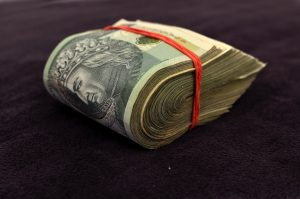The foreign exchange (forex) market is one of the largest and most liquid financial markets in the world. It is a decentralized market where currency pairs are traded 24 hours a day, five days a week. In the forex market, traders can take positions in a currency pair by either buying (going long) or selling (going short) that pair. In this article, we will explain what it means to go long or short in the forex market and what factors traders consider when deciding to take a position.
Long Position
A long position in the forex market means that a trader is buying a currency pair with the expectation that its value will increase over time. For example, if a trader takes a long position in the EUR/USD currency pair, they are buying the euro and selling the US dollar. The trader believes that the euro will appreciate in value relative to the dollar, and therefore they will make a profit when they sell the euro back to the market at a higher price.
Traders take long positions in the forex market for a variety of reasons. Some may take a long position because they believe that the economic fundamentals of a particular country are improving, which will lead to a stronger currency. Others may take a long position based on technical analysis, which involves analyzing past price movements to identify patterns and trends that can be used to predict future price movements.
Short Position
A short position in the forex market means that a trader is selling a currency pair with the expectation that its value will decrease over time. For example, if a trader takes a short position in the EUR/USD currency pair, they are selling the euro and buying the US dollar. The trader believes that the euro will depreciate in value relative to the dollar, and therefore they will make a profit when they buy the euro back at a lower price.
Traders take short positions in the forex market for similar reasons as long positions. They may believe that the economic fundamentals of a particular country are deteriorating, which will lead to a weaker currency. They may also use technical analysis to identify patterns and trends that suggest that the price of a currency pair is likely to fall.
Risk and Reward
Both long and short positions in the forex market come with their own set of risks and rewards. When a trader takes a long position, they are exposed to the risk that the currency they are buying will decrease in value, which will result in a loss. However, if the currency increases in value as expected, the trader will make a profit. The potential reward for a long position is unlimited, as there is no limit to how high a currency can appreciate in value.
When a trader takes a short position, they are exposed to the risk that the currency they are selling will increase in value, which will result in a loss. However, if the currency decreases in value as expected, the trader will make a profit. The potential reward for a short position is also unlimited, as there is no limit to how low a currency can depreciate in value.
Factors to Consider
Traders must consider a variety of factors when deciding whether to take a long or short position in the forex market. These factors include:
Economic indicators: Traders must stay up to date on economic indicators such as GDP, inflation, and employment data, as these can have a significant impact on a currency’s value.
Central bank policies: Traders must also pay attention to the policies of central banks, as changes in interest rates and monetary policy can have a significant impact on a currency’s value.
Geopolitical events: Traders must be aware of geopolitical events such as elections, trade agreements, and conflicts, as these can also have a significant impact on a currency’s value.
Technical analysis: Traders may use technical analysis to identify patterns and trends in the price movements of currency pairs, which can be used to predict future price movements.
Conclusion
In summary, going long or short in the forex market refers to taking a position in a currency pair with the expectation that its value will either increase or decrease over time. Traders must consider a variety of factors when deciding whether to take a long or short position, including economic indicators, central bank policies, geopolitical events, and technical analysis. Both long and short positions come with their own set of risks and rewards, and traders must carefully weigh these factors before making a decision.





